- Home
- Jason Webster
Andalus Page 18
Andalus Read online
Page 18
‘Will they let me in? As a … ?’
‘Don’t worry,’ I said.
He gave a half-smile, not quite convinced, but I steered him over the threshold before he could ask any questions.
Inside the church was dark and layered thick with gilt Baroque design work. Gold-painted geometrical and vegetal motifs decorated the walls, columns and arches painted in heavy blues and greens. I walked down the central aisle of the nave as Zine headed off to hide in the shadows. Towards the front, a small group of elderly arthritic women were doing their best to kneel down and pray, spotlights focused on the golden altar and the Black Madonna sitting high up with Baby Jesus on her lap. The place was quiet and still; not a sound was made by the dozen or so visitors pacing the stone slabs of the floor.
‘Hey, you!’ In an instant, the sanctified atmosphere broke as a hysterical male voice echoed suddenly around the ancient stonework. Everyone in the church quickly turned round to see what was happening. It was amazing how fast some of those old women could move when distracted from their prayers. I looked around for Zine.
‘Thief!’ The voice shouted again, coming from the direction of the altar. I turned to see a priest shouting at a young man whose back was turned to me. I couldn’t see his face, but knew at once who it was.
The priest’s eyes were screwed tight like whirlwinds, his cheeks flushed red with anger, his hands outstretched as though about to grasp Zine’s neck.
‘¡No se toca la Cruz! You don’t touch the Cross!’
I ran up quickly and pulled Zine away. The priest looked like the kind who don’t mind having the odd scrap every now and again.
‘It’s his first time in a church,’ I said, trying to explain, placing myself between them as best I could.
‘¡Fuera de aquí! Get out!’ he shouted. Foam-like spit bubbled at the corner of his mouth.
‘He’s no thief. He was just curious.’
‘OUT!’
Zine had already backed away almost to the door; it was clear this man of God was not prepared to discuss things. I couldn’t help wondering if he’d worked as a bouncer before deciding to devote his life to Christ.
I was reluctant to give in to this blatantly aggressive approach, especially in a church, especially when the accusation was false, but the priest lunged at me threateningly, to make the point that I was taking too long to leave.
The old women glared as I walked to the doorway out of which Zine had already passed, while the priest muttered behind my back.
Zine was sitting on the stone steps in the sun-blanched courtyard outside the basilica, a white look of fear on his face. He scratched around his ears nervously.
‘I didn’t even touch the cross,’ he said, staring at the stone floor.
‘They probably thought you wanted to be converted,’ I said, sitting down next to him. I was furious at the priest, but thought making light of it might help to calm Zine down.
He stood up sharply, though, and walked off without a word, pacing quickly and heavily through the black shade of the protecting arcade into the open square. I watched him disappear, and remained where I was: better to leave him alone for a while.
Violent priests. I breathed deeply in an attempt to calm my rage. Unfortunately it was not the first time I’d been threatened in a church: a priest had once attacked me in Assisi for no good reason, grabbing me by the scruff of the neck and throwing me out. Yet still I was shocked by it. Wrongly, perhaps: the image these frock-wearers gave was one of peace and harmony, yet you only had to look at their faces for a few minutes to realize the majority of them were semi-detached frustrated balls of anger. In fact it was surprising they didn’t have a go more often. I just wished that Zine’s first experience in a church hadn’t been quite so dramatic.
I waited for a while, but after twenty minutes I realized he wasn’t coming back, and walked carefully into the basilica again through the special side entrance designed for visits to the Black Madonna. The passageway led you past the chapels on the right-hand side, so I couldn’t be seen by the worshippers in the church itself. There was no sign of the priest.
I climbed an ornate staircase round the back of the altar until I was standing some ten or fifteen feet up, where the statue was encased in heavy silverwork, with thick bas-reliefs on either side depicting biblical scenes. The Madonna herself looked as though she belonged to a very different age to the one that had wrapped her in this ornate splendour. She was draped in golden robes and with a gold crown, her head out of proportion to her slim, elegant body, and her face long and stylized: a sharp, almost unnatural nose turned up slightly; a receding chin; low forehead and narrow eyes. And this strangeness about her was accentuated by her being as black as night, as her face and hands were made of what looked like ebony. In her right hand she held a black ball that visitors were supposed to kiss, and on her left sat the Baby Jesus, as black as his mother, but without her other-worldliness – more cherub-like, with golden curly locks flowing down either side of his black cheeks.
The Madonna was said to be a work of Romanesque sculpture from the twelfth century, but many preferred the legend that she was the work of St Luke, brought to Catalonia by St Peter and hidden during the Moorish conquest, only to be lost and then rediscovered by seven shepherds tending their herds one evening on Montserrat. Whatever her origin, there was something arresting about the statue, her far-away look reminiscent of the famous bust of Nefertiti in Berlin. Perhaps it was true that Black Madonnas were a remnant of the Egyptian cult of Isis and the baby Horus. Yet there were other theories about the origins of this strange cult: Robert Graves had suggested she represented the Black Goddess, a wiser version of the poetic muse, the White Goddess. Certainly there seemed to be few pointers within Christianity itself. Mary, either black or white, was barely mentioned in the Bible at all – just a handful of references in the Gospels and one line in the Acts of the Apostles. The Qur’an, on the other hand, devoted a whole sura, or chapter, to her, as the mother of one of the prophets recognized by Islam – Jesus. Was it only coincidence that the cult of the Virgin Mary was more intense in parts of Europe that had felt the greatest Muslim influence in the Middle Ages, namely Spain, southern Italy and southern France? Walking into some of the churches in these countries you might easily think Christianity was a goddess-based religion, so dominant were the images of her. In the past I might have thought it a bizarre idea, that Catholicism might have been inspired by Islam in such a way. Yet as I’d travelled around I’d come across so many instances of subtle crossovers between these two religions that now the idea seemed more than possible. Black was a significant colour for Muslims: the colour of wisdom. There might well be another connection there with the Black Madonnas. Gazing at the statue for some time, though, I could find no other clues. It was a question that, at least for now, would have to remain unresolved.
Zine was waiting for me outside, a book in his hand. He held it out to me as I walked up to him.
‘I’ve found something for you,’ he said.
‘Are you all right?’
‘Look at it,’ he insisted.
It was a small, colourful children’s book with a drawing on the front of two men sitting on a hilltop dressed in Arab costume. Els Gegants, it said in Catalan – The Giants. It looked familiar for some reason, and glancing at the spine I realized it was from the same publisher as the book of Musa the Moor that Chimo had sold me back in Valencia.
‘I saw the picture of the man in a fez and thought you’d be interested in it,’ Zine said. He’d bought it for me, despite having almost no money.
We sat down on the steps leading away from the church and, curious, I began to read the story out loud:
It was said that when the Moors had conquered Catalonia they were helped by very tall, ferocious giants. But as time went on the giants got used to the good life, and when the Christians were about to retake the area, and the Moors were leaving in droves, the giants, now quiet and peace-loving, decided to stay. At a special
meeting they all decided they would ask for help from the witch Hipolita, who lived near by. And so in the darkness of her cave she brewed them a special potion made from secret ingredients. Flying off on her broom to where the giants lived, she pronounced the magic words Abelú, Quemira, Bossanal, and sprinkled the potion on their hands. All at once torrential rain began to fall, thunder bellowed out and forked lightning split the sky. The giants were terrified. But no sooner had they realized what was happening than they all turned into stone, frozen solid in the form of the mysterious and enigmatic mountain now known as Montserrat. And so they slept for years and years until … One day Gertrudis, the only daughter of the Count of Barcelona, fell mysteriously ill. Feeling sad and listless, she spent all day lying in bed, neither eating or sleeping. Fearing for his daughter’s life, the Count called all the doctors of the land to try and cure her, but none could help the poor girl. Then one day, a young troubadour arrived. Convinced of the healing power of music, he stood below Gertrudis’ bedroom window and began playing the most beautiful music you could ever imagine. Days passed, and the days turned into weeks, and months and even years, and still the troubadour played until one day the Count’s daughter, her curiosity finally aroused, got up to see who was playing such sweet music. But having lain down for so long, she only got as far as putting her nose out of the window before she had to return to bed. The next day she tried again, and this time she managed to get as far as feeling the sun on her face before she had to lie down once more. But on the third day, the troubadour’s music now having healed her completely, she was able to lean out of the window and see for the first time who had been playing for her all this time. And as is the way in these things, as soon as the couple set eyes on each other they fell in love and decided to get married. The Count was deliriously happy when he found out his daughter was cured, and decided the wedding should take place on Montserrat. Over three hundred musicians, troubadours, jugglers, acrobats and harlequins came to put on a spectacle in the square in front of the church. The noise they made was so great, and echoed so loudly around the mountain, that the rocks began to wake up, and remember the life they had lived so many years before, breaking out from their stony shapes to become … giants once more. And moved by the music and the drums and crashing cymbals, they began to dance with the wedding guests, spinning and spinning around in circles. And when the party was over, and the music finally stopped, they returned to stone and the mountain took on its peculiar shape once more. And since that day they say the giants only come alive again to dance when sons and daughters of the Counts of Barcelona get married in the church of Montserrat.
The holy mountain of Catalonia, one of the most important Christian sites in the whole of Spain, was in fact the resting place of Moorish giants. I laughed. Peel back a layer or two and the Arab past was clearly there, like a veiled dancing girl.
‘See?’ Zine said.
‘What?’
‘They can’t get rid of us Moors that easily.’
I punched him in the ribs: he was stealing my lines.
BARCELONA
His Royal Highness Prince José-María de Almuzara of the Banu Qasi, Grand Master of the Order of Muza, Pasha of Islam, Honorary General of Italy, Grand Marshal of the Sovereign and Military Order of the Temple of Jerusalem, Secret Counsellor of the Ancient Byzantine Catholic and Apostolic Church, and President of the Catalan section of the Asociación Española de Orientalistas, granted me an audience in his small flat just off the Diagonal avenue. Thanks to a contact from Pedro, I had been given the chance to meet the last male member of a family that had once reigned over a third of Spain during Islamic times: a short man with liver spots and badly dyed black hair showing its natural white beneath a shower of dandruff. He had a certain presence, though, and was self-assured, as though conscious of his royal lineage and proud of it.
‘I feel this Moorishness in my blood,’ he said as we sat down on a painted wooden bench-like sofa, ‘even if I don’t know anything about my family’s past; it’s inside me.’
It was everywhere around him as well. The flat was in a small district near the centre of Barcelona, built perhaps a hundred years before, where the buildings were either one or two storeys high – the kind of flat, low effect you get on cowboy filmsets. Inside, though, was like walking into a tourist shop in the Khan el-Khalili bazaar in Cairo. Brightly coloured leather pouffes with gold design work were strewn on the floor; lacquer-work tables with mind-boggling Arabesque patterns leant against the walls; Arab-style damascene steel swords such as I’d seen in Toledo, inlaid with the motto of the Nasrid dynasty of Granada – wa la ghaliba illa Allah, no conqueror but God – decorated the walls; while brass Moroccan lanterns with coloured glass hung from the ceiling. Most had been bought on various trips to the Middle East with the prince’s friend Guillermo, an elderly man who shadowed us as we walked around the flat.
The prince pointed to a giant golden urn standing in a corner.
‘The shah of Iran ordered several hundred of those from a man here in Barcelona, because there was no-one else in the world who could make them. I knew the craftsman and he gave me one of the spares.’
I looked down at the enormous lump of gold-coloured metal next to me.
‘Try lifting it; it’s incredibly heavy!’
After a token effort I pleaded back problems and gave up.
The tour of the small living space continued, passing through Ali Baba archways and treading on Oriental rugs. The prince had had a shield made with the family emblem blazoned on the front – a gold octagon on a green background. He’d had a ring made in similar fashion, with gold, diamonds and emerald, and it jutted out from the third finger on his left hand.
‘My family were rulers of this part of Spain even in Visigothic times and before – in the Iberian period,’ he said. ‘It was called the Cassi tribe then. Some of them colonized Britain and ended up in the Oxford area. In Roman times the family name became Cassius, then Banu Qasi in Arabic – the tribe of Qasi: that’s the name we took after the Moorish invasion.’
A play on words came to mind: combining the Arabic and Spanish, the family name translated into something like the McAlmosts. It could hardly have been more apt.
The family story was a common one throughout the territories conquered by Muslim armies, where agreements were often reached with existing local rulers rather than changes being imposed. In what was now Aragón and Catalonia, Prince José-María’s family, the Banu Qasi, had stayed in power by converting to Islam at the time of the Moorish conquest. The head of the family accompanied the victorious Muslim armies back to Damascus to be presented before the caliph, and his son married the daughter of the Moorish ruler – Musa. The child resulting from this marriage took the name of his maternal grandfather and henceforth it became a family name, later transforming into the present surname Almuzara: the prince was therefore a direct descendant of Musa the Moor, the man whose secret treasure I’d been trying to find.
In the years after the Moorish conquest, a policy of marrying into the most powerful families on both the Christian and Muslim sides ensured that the Banu Qasi remained the most powerful group in the north-east of the country, and were even dubbed ‘the third kings of Spain’ – after the Muslim emir in the south and the Christian king in the north.
‘We had castles all over this area – right up to Huesca and beyond,’ the prince said. ‘Both Abd al-Rahman III and the Bourbon kings are descendants of the Banu Qasi.’
Abd al-Rahman III, the red-haired, blue-eyed caliph of Cordoba, had ruled over the Golden Age of Al-Andalus; the Bourbons were not only erstwhile kings of France, but were now occupying the throne of modern Spain.
‘Some time in the sixties the Ministry of Justice decided to sort out all the claims that were about at that time; there was one man who even said he was the descendant of Montezuma! So they came here and spent – what was it? Three weeks here? No, two months – looking at the papers I’ve got – over 2,000 pieces of paper to prove my li
neage. Look, even Pope John XXIII recognized me.’
We walked over to a framed document showing the jowl-faced patriarch with his abnormally large ears.
‘I’ve got more titles than I can remember. Here, some of them are on the back of my card. But there are more. I’ve got them written down somewhere.’
I was more interested, though, in what this man represented of the Islamic past, perhaps a living gem from Musa’s treasure: an embodiment of both the Islamic and Christian elements that fused in Spain to make it the unique country it was. What did he feel? Moorish? Spanish?
‘I’m Catalan,’ he said. ‘Then Spanish, then Moorish. The Arabs were here for a thousand years. A thousand years!’ He raised his finger. ‘The Romans only controlled Spain for three or four centuries, the Visigoths less. People just don’t remember that.’
I decided to ask the prince about his views on Muslims currently living in Spain. What did he think of the proposal to build a mosque in Premià?
At this point Guillermo, who had been sitting quietly until that moment, exploded.
‘It’s a scandal!’ he screamed.
I looked round. The man had barely moved since we sat down, perched elegantly in his smart grey suit, his grey hair beautifully groomed. His features were Germanic and he had light-coloured eyes. I’d assumed that, as a friend of the Arab-loving prince, and his companion on numerous trinket-buying trips to the Middle East, he would be better disposed to the small Muslim community in the coastal town who, after buying a plot of land in the centre, were now being denied permission by the Catalan authorities to build a mosque there.
‘They make too much noise,’ he said. ‘There’s nowhere to park, the streets are narrow and they come and take all the parking spaces and people can’t sleep at night because of the wailing of the muezzin.’
I was surprised. This was Spain, the noisiest country in Europe. And there was never anywhere to park, but you always managed to squeeze in somewhere nonetheless – on the pavement, double-parked, on the zebra crossing or simply in the middle of the road, as long as people could still get past. But Guillermo was steaming.

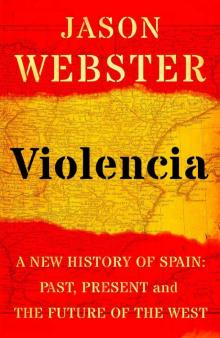 Violencia
Violencia Or the Bull Kills You
Or the Bull Kills You The Killing of El Niño Jesús
The Killing of El Niño Jesús The Spy with 29 Names
The Spy with 29 Names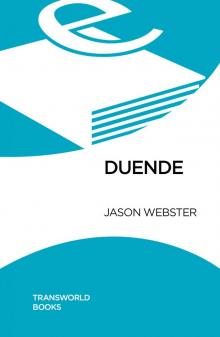 Duende
Duende Guerra
Guerra Sacred Sierra
Sacred Sierra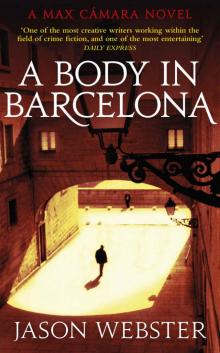 A Body in Barcelona: Max Cámara 5
A Body in Barcelona: Max Cámara 5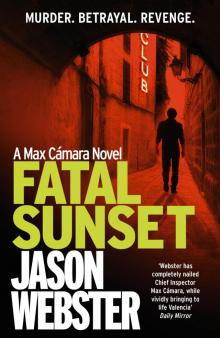 Fatal Sunset
Fatal Sunset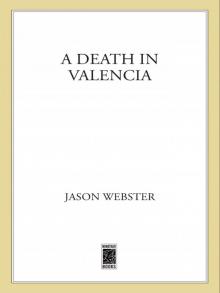 A Death in Valencia
A Death in Valencia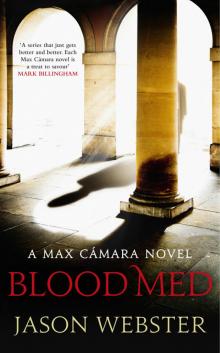 Blood Med
Blood Med Andalus
Andalus